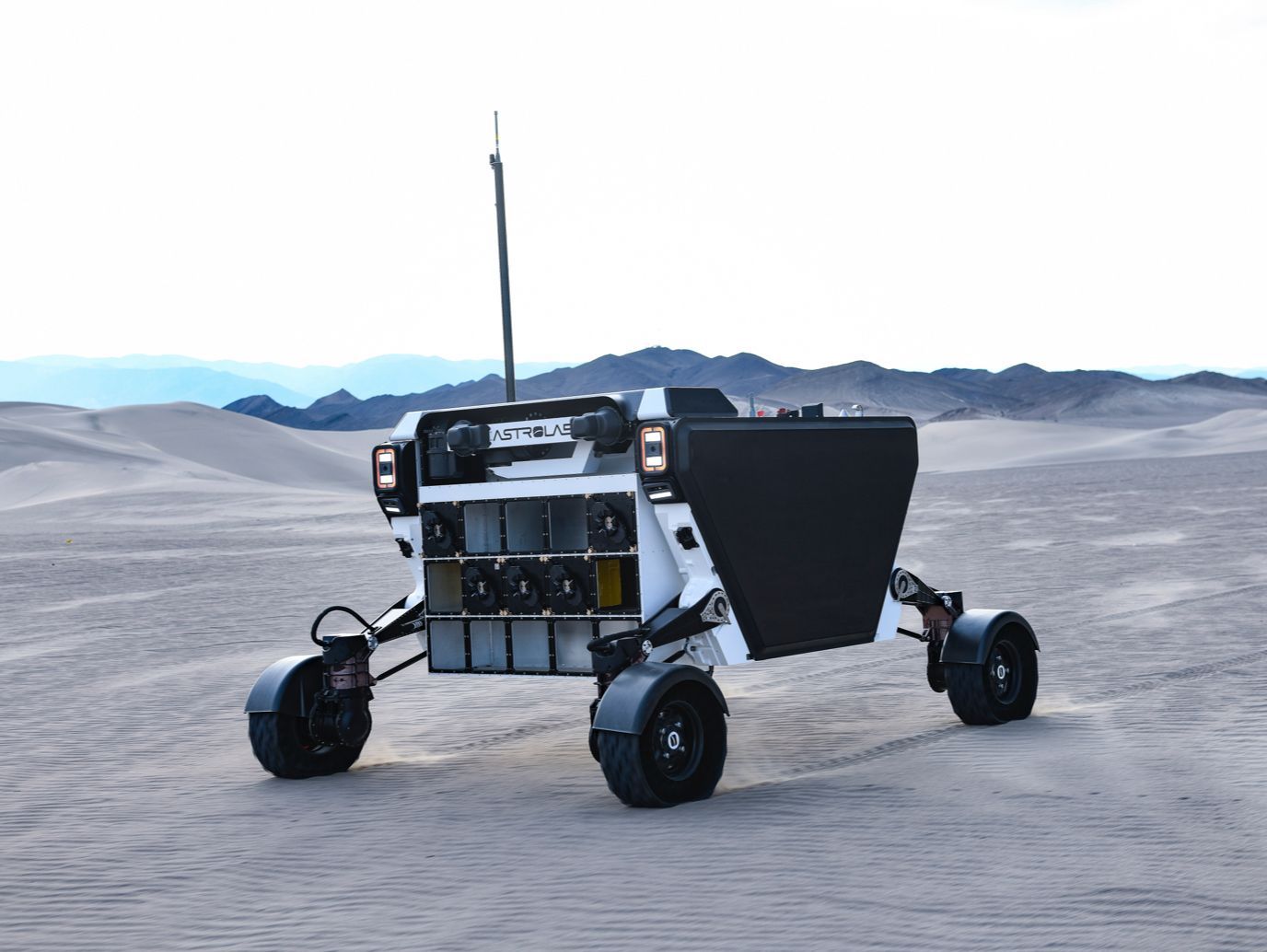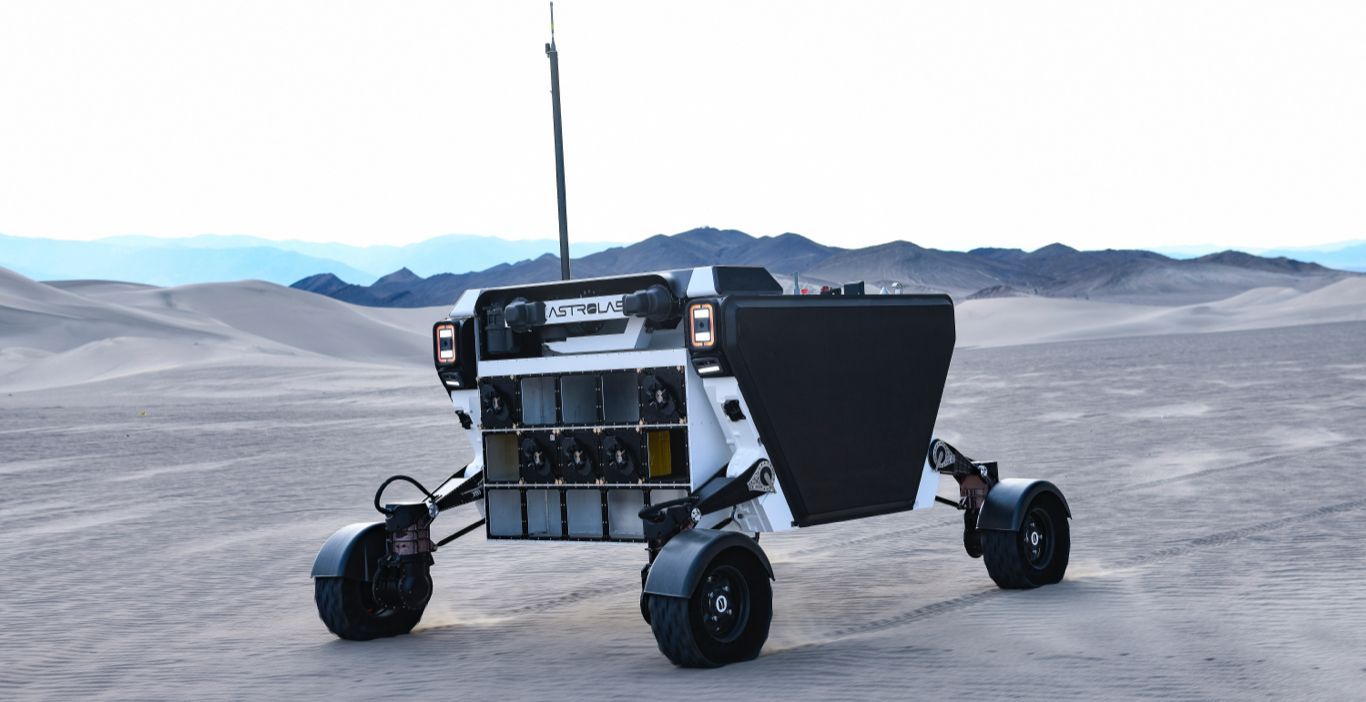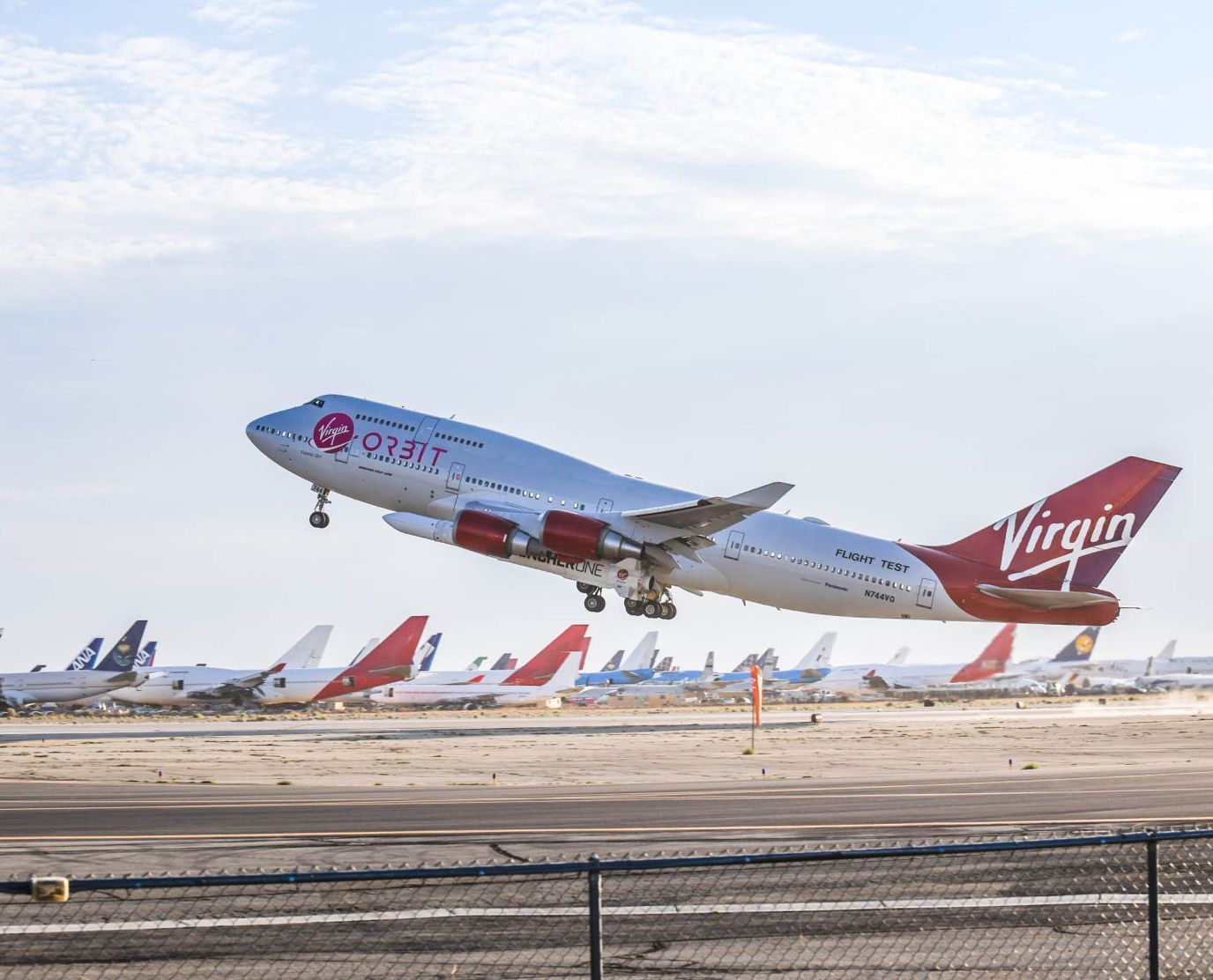7 April 2023
New Space wasn’t going to be easy, but it’s the future of humankind - Space News Roundup

Virgin Orbit file for bankruptcy (Image: Virgin Orbit)
Virgin Orbit’s filing for bankruptcy this week is a reminder of just how tough our ventures into New Space will be. They are not the first victim and will not be the last. We regularly see failed launch attempts, such as Relativity Space last moth, businesses requiring financial bailouts and geopolitical hurdles threatening the peace and stability of this new industrial revolution. We’re yet to see what the future of Virgin orbit will be, but it seems, for now, they have paid the ultimate price.
However, it’s from such failures that we learn how to create success. SpaceX have had numerous failures with their Starship prototypes, but have taken each as a lesson, and we are now hopefully going to witness the first launch of their highly anticipated interplanetary vehicle as soon as next week. Furthermore, New Zealand’s Rocket Lab have failed on each attempt to catch their first stage boosters mid-air using a helicopter, but have since learned that they can be recovered from the ocean, refitted and reused.
This week have seen successes, failures and challenges in New Space, but one thing is for sure, it will be our future.
Success is often the result of failure
Astra Aerospace is preparing for launch of its Rocket 4 before the end of the year, in more positive news for the launch startup. They have experienced numerous failed launches of their previous 3.3. Rocket, and last year risked having their listing removed from the NASDAQ share index. A successful launch of their larger Rocket 4 could be critical for their future success, and they could be rewarded with growing demand in the launch industry.
Facing similar financial struggles, Swiss satellite operator Astrocast have taken a $17.5 million lifeline from Thuraya, a satellite services operator. As we’ve seen with the launch market, it may be vital that governments maintain support for fledgling space companies, in order to secure long-term success.
Failures of geopolitics and our ability to work together still poses an even greater threat than financial instability. This week, speaking to Chinese state media outlet Global Times, Moon Village Association president Giuseppe Reibaldi stressed the need for humanity to work together in relation to lunar exploration. However, the article also highlights that while the new Chinese Space Station (CSS) has been opened for cooperation from all international partners, some countries have taken a step back from working with China, most notably ESA, citing political barriers.
This all points towards to an ignition of a new space race, or specifically a race to the Moon, for its territory and resources. In March, Yang Mengfei from the China Aerospace Science and Technology Corporation (CASC) suggested that China seize the moment and take the lead in establishing a lunar infrastructure, ahead of its competitors. He went on to say that “at present, the United States, Europe, and Japan have proposed relevant plans for Earth-moon space infrastructure, but they have not yet entered the stage of on-orbit construction,”. This again points towards a sad reality, that the world appears to be splitting into rival factions, galvanised by deteriorating international relations on Earth.
The emergence of these new “space blocs” has been encouraged by deep political and ideological divisions, and mistrust. In March it was realised that the UAE may be prevented from working with China to launch their second Rashid lunar rover, due to US technology transfer rules, namely the 1976 International Traffic in ArmsRegulations (ITAR). It was hoped that this relationship might have given the UAE a role as an international mediator between the US and China, but those plans may have been halted, for now. As a result, China have been looking elsewhere for partners, and this week, Venezuela were invited to join China and Russia on their International Lunar Research Station (ILRS) plans, due to be constructed in the early 2030s.
As the US also presses on with their Artemis Accords (a legal framework for outer space exploration and currently has 23 member states) the divide seems to be growing into a canyon. It’s about time that leaders begin to learn from the failures of human history, especially when it comes to utilising valuable resources and territory, and begin to work together.

Astrolab's FLEX rover (Image: Venturi Astrolab)
Opportunities becoming more diverse
Beyond the challenges and struggles of the new space economy, we continue to see an increasingly diverse set of opportunities arising. Astrolab this week announced that they will be sending their FLEX lunar rover to Moon as part of a SpaceX Starship launch in 2026. The crewed rover can travel up to a “couple of thousand miles per year” according Jaret Matthews, founder and chief executive of Astrolab, and is optimised for the lunar south pole, where most precious resources, such as water, are believed to be.
Diversity in the lunar rover market is expanding, from crewed vehicles, to robotic and autonomous rovers. The UAE’s Rashid rover is due to arrive on the surface of the Moon in a matter of weeks, and Astrobotic will be transporting Mexico’s tiny Colmena rovers later in the year. Also launching later this year will be Lunar Outpost’s MAPP rover, with another commercial lander company, Intuitive Machines. The rover will carry a curious payload from California-based social intelligence company LunarCrush. The company is aiming to deliver a “treasure chest” of 62 Bitcoins to the Moon (current market value of $1.7 million) and can be claimed by the first lunar traveler to reach it and access the private key, which will be etched onto the rover. According to Lunar Crush’s CEO, the mission is to “…build communities that will unlock a new era of exploration,”.
Similarly, blockchain company Cryptosat have been contributing to an Ethereal KZG ceremony (a public event which will provide a cryptographic foundation for Ethereum scaling initiatives) from space, using their Cryptosat 2 satellite. While offering different functions, Lunar Crush’s and Cryptosat’s respective plans indicate what the future applications of blockchain might be in space. The former’s plan may indicate a future use of cryptocoins as a universal space currency, and we mustn’t forget about SpaceX’s plans to send a “literal Dogecoin” to the Moon later this year, in what Elon Musk describes as a demonstration of the application of cryptocurrency beyond Earth orbit. With other new cryptos such as MarsCoin and SpaceXCoin emerging, will cryptocurrency have a prominent role to play in the New Space economy?
Outside the “big three” of the US, China and Russia, other nations are adding diversity to the space industry. An article from The Times of India this week highlighted how India is now in a position to take advantage of the geopolitical isolation of Russia and China, and act as a direct competitor to SpaceX. This could be a golden opportunity for India, as the industry faces a bottleneck in launch supply, and may also be looking to branch out and reduce reliance on only one launch supplier. Adding to this launch diversity, this week the Indian space agency (ISRO) successfully, autonomously landed their Reusable Launch Vehicle (RLV), opening the way for eventually sending reusable vehicles into space.
South Korea are also building on plans to become a New Space powerhouse, setting record government spending this year at $674 million, and eventually plan to put $76.8 billion dollars into their space sector by 2045. With a burgeoning private sector and a sovereign launch industry, South Korea may also offer their services as a new alternative to traditional space nations and leading companies of the day.
Lastly, the most notable current space exploration mission, NASA’s Artemis project, has taken another step forwards by announcing the crew for Artemis-2, which will take the astronauts further into space than any human has traversed before. Furthermore, the chosen crew also represent a new era of diversity, which include the first woman and black person to travel to the Moon. Although Artemis-2 will not land on the surface, it will be the first crewed mission to the Moon on over 50 years.
The space economy represents growth possibilities, even during difficult times. From launch technology, lunar vehicles and satellite constellations, to data storage and blockchain applications, there are vast opportunities for our future. The journey will not always be easy, and there will be failures. Leaders of nations and industry must accept that failures will happen, but also accept that we must learn from them, and not repeat them.
External Links
This Week
*News articles posted here are not property of ANASDA GmbH and belong to their respected owners. Postings here are external links only.
Our future in space

Virgin Orbit file for bankruptcy (Image: Virgin Orbit)
7 April 2023
New Space wasn’t going to be easy, but it’s the future of humankind - Space News Roundup
Virgin Orbit’s filing for bankruptcy this week is a reminder of just how tough our ventures into New Space will be. They are not the first victim and will not be the last. We regularly see failed launch attempts, such as Relativity Space last moth, businesses requiring financial bailouts and geopolitical hurdles threatening the peace and stability of this new industrial revolution. We’re yet to see what the future of Virgin orbit will be, but it seems, for now, they have paid the ultimate price.
However, it’s from such failures that we learn how to create success. SpaceX have had numerous failures with their Starship prototypes, but have taken each as a lesson, and we are now hopefully going to witness the first launch of their highly anticipated interplanetary vehicle as soon as next week. Furthermore, New Zealand’s Rocket Lab have failed on each attempt to catch their first stage boosters mid-air using a helicopter, but have since learned that they can be recovered from the ocean, refitted and reused.
This week have seen successes, failures and challenges in New Space, but one thing is for sure, it will be our future.
Success is often the result of failure
Astra Aerospace is preparing for launch of its Rocket 4 before the end of the year, in more positive news for the launch startup. They have experienced numerous failed launches of their previous 3.3. Rocket, and last year risked having their listing removed from the NASDAQ share index. A successful launch of their larger Rocket 4 could be critical for their future success, and they could be rewarded with growing demand in the launch industry.
Facing similar financial struggles, Swiss satellite operator Astrocast have taken a $17.5 million lifeline from Thuraya, a satellite services operator. As we’ve seen with the launch market, it may be vital that governments maintain support for fledgling space companies, in order to secure long-term success.
Failures of geopolitics and our ability to work together still poses an even greater threat than financial instability. This week, speaking to Chinese state media outlet Global Times, Moon Village Association president Giuseppe Reibaldi stressed the need for humanity to work together in relation to lunar exploration. However, the article also highlights that while the new Chinese Space Station (CSS) has been opened for cooperation from all international partners, some countries have taken a step back from working with China, most notably ESA, citing political barriers.
This all points towards to an ignition of a new space race, or specifically a race to the Moon, for its territory and resources. In March, Yang Mengfei from the China Aerospace Science and Technology Corporation (CASC) suggested that China seize the moment and take the lead in establishing a lunar infrastructure, ahead of its competitors. He went on to say that “at present, the United States, Europe, and Japan have proposed relevant plans for Earth-moon space infrastructure, but they have not yet entered the stage of on-orbit construction,”. This again points towards a sad reality, that the world appears to be splitting into rival factions, galvanised by deteriorating international relations on Earth.
The emergence of these new “space blocs” has been encouraged by deep political and ideological divisions, and mistrust. In March it was realised that the UAE may be prevented from working with China to launch their second Rashid lunar rover, due to US technology transfer rules, namely the 1976 International Traffic in ArmsRegulations (ITAR). It was hoped that this relationship might have given the UAE a role as an international mediator between the US and China, but those plans may have been halted, for now. As a result, China have been looking elsewhere for partners, and this week, Venezuela were invited to join China and Russia on their International Lunar Research Station (ILRS) plans, due to be constructed in the early 2030s.
As the US also presses on with their Artemis Accords (a legal framework for outer space exploration and currently has 23 member states) the divide seems to be growing into a canyon. It’s about time that leaders begin to learn from the failures of human history, especially when it comes to utilising valuable resources and territory, and begin to work together.

Astrolab's FLEX rover (Image: Venturi Astrolab)
Opportunities becoming more diverse
Beyond the challenges and struggles of the new space economy, we continue to see an increasingly diverse set of opportunities arising. Astrolab this week announced that they will be sending their FLEX lunar rover to Moon as part of a SpaceX Starship launch in 2026. The crewed rover can travel up to a “couple of thousand miles per year” according Jaret Matthews, founder and chief executive of Astrolab, and is optimised for the lunar south pole, where most precious resources, such as water, are believed to be.
NDiversity in the lunar rover market is expanding, from crewed vehicles, to robotic and autonomous rovers. The UAE’s Rashid rover is due to arrive on the surface of the Moon in a matter of weeks, and Astrobotic will be transporting Mexico’s tiny Colmena rovers later in the year. Also launching later this year will be Lunar Outpost’s MAPP rover, with another commercial lander company, Intuitive Machines. The rover will carry a curious payload from California-based social intelligence company LunarCrush. The company is aiming to deliver a “treasure chest” of 62 Bitcoins to the Moon (current market value of $1.7 million) and can be claimed by the first lunar traveler to reach it and access the private key, which will be etched onto the rover. According to Lunar Crush’s CEO, the mission is to “…build communities that will unlock a new era of exploration,”.
Similarly, blockchain company Cryptosat have been contributing to an Ethereal KZG ceremony (a public event which will provide a cryptographic foundation for Ethereum scaling initiatives) from space, using their Cryptosat 2 satellite. While offering different functions, Lunar Crush’s and Cryptosat’s respective plans indicate what the future applications of blockchain might be in space. The former’s plan may indicate a future use of cryptocoins as a universal space currency, and we mustn’t forget about SpaceX’s plans to send a “literal Dogecoin” to the Moon later this year, in what Elon Musk describes as a demonstration of the application of cryptocurrency beyond Earth orbit. With other new cryptos such as MarsCoin and SpaceXCoin emerging, will cryptocurrency have a prominent role to play in the New Space economy?
Outside the “big three” of the US, China and Russia, other nations are adding diversity to the space industry. An article from The Times of India this week highlighted how India is now in a position to take advantage of the geopolitical isolation of Russia and China, and act as a direct competitor to SpaceX. This could be a golden opportunity for India, as the industry faces a bottleneck in launch supply, and may also be looking to branch out and reduce reliance on only one launch supplier. Adding to this launch diversity, this week the Indian space agency (ISRO) successfully, autonomously landed their Reusable Launch Vehicle (RLV), opening the way for eventually sending reusable vehicles into space.
South Korea are also building on plans to become a New Space powerhouse, setting record government spending this year at $674 million, and eventually plan to put $76.8 billion dollars into their space sector by 2045. With a burgeoning private sector and a sovereign launch industry, South Korea may also offer their services as a new alternative to traditional space nations and leading companies of the day.
Lastly, the most notable current space exploration mission, NASA’s Artemis project, has taken another step forwards by announcing the crew for Artemis-2, which will take the astronauts further into space than any human has traversed before. Furthermore, the chosen crew also represent a new era of diversity, which include the first woman and black person to travel to the Moon. Although Artemis-2 will not land on the surface, it will be the first crewed mission to the Moon on over 50 years.
The space economy represents growth possibilities, even during difficult times. From launch technology, lunar vehicles and satellite constellations, to data storage and blockchain applications, there are vast opportunities for our future. The journey will not always be easy, and there will be failures. Leaders of nations and industry must accept that failures will happen, but also accept that we must learn from them, and not repeat them.
Share this article
External Links
This Week
*News articles posted here are not property of ANASDA GmbH and belong to their respected owners. Postings here are external links only.
7 April 2023
New Space wasn’t going to be easy, but it’s the future of humankind - Space News Roundup

Virgin Orbit file for bankruptcy (Image: Virgin Orbit)
Virgin Orbit’s filing for bankruptcy this week is a reminder of just how tough our ventures into New Space will be. They are not the first victim and will not be the last. We regularly see failed launch attempts, such as Relativity Space last moth, businesses requiring financial bailouts and geopolitical hurdles threatening the peace and stability of this new industrial revolution. We’re yet to see what the future of Virgin orbit will be, but it seems, for now, they have paid the ultimate price.
However, it’s from such failures that we learn how to create success. SpaceX have had numerous failures with their Starship prototypes, but have taken each as a lesson, and we are now hopefully going to witness the first launch of their highly anticipated interplanetary vehicle as soon as next week. Furthermore, New Zealand’s Rocket Lab have failed on each attempt to catch their first stage boosters mid-air using a helicopter, but have since learned that they can be recovered from the ocean, refitted and reused.
This week have seen successes, failures and challenges in New Space, but one thing is for sure, it will be our future.
Success is often the result of failure
Astra Aerospace is preparing for launch of its Rocket 4 before the end of the year, in more positive news for the launch startup. They have experienced numerous failed launches of their previous 3.3. Rocket, and last year risked having their listing removed from the NASDAQ share index. A successful launch of their larger Rocket 4 could be critical for their future success, and they could be rewarded with growing demand in the launch industry.
Facing similar financial struggles, Swiss satellite operator Astrocast have taken a $17.5 million lifeline from Thuraya, a satellite services operator. As we’ve seen with the launch market, it may be vital that governments maintain support for fledgling space companies, in order to secure long-term success.
Failures of geopolitics and our ability to work together still poses an even greater threat than financial instability. This week, speaking to Chinese state media outlet Global Times, Moon Village Association president Giuseppe Reibaldi stressed the need for humanity to work together in relation to lunar exploration. However, the article also highlights that while the new Chinese Space Station (CSS) has been opened for cooperation from all international partners, some countries have taken a step back from working with China, most notably ESA, citing political barriers.
This all points towards to an ignition of a new space race, or specifically a race to the Moon, for its territory and resources. In March, Yang Mengfei from the China Aerospace Science and Technology Corporation (CASC) suggested that China seize the moment and take the lead in establishing a lunar infrastructure, ahead of its competitors. He went on to say that “at present, the United States, Europe, and Japan have proposed relevant plans for Earth-moon space infrastructure, but they have not yet entered the stage of on-orbit construction,”. This again points towards a sad reality, that the world appears to be splitting into rival factions, galvanised by deteriorating international relations on Earth.
The emergence of these new “space blocs” has been encouraged by deep political and ideological divisions, and mistrust. In March it was realised that the UAE may be prevented from working with China to launch their second Rashid lunar rover, due to US technology transfer rules, namely the 1976 International Traffic in ArmsRegulations (ITAR). It was hoped that this relationship might have given the UAE a role as an international mediator between the US and China, but those plans may have been halted, for now. As a result, China have been looking elsewhere for partners, and this week, Venezuela were invited to join China and Russia on their International Lunar Research Station (ILRS) plans, due to be constructed in the early 2030s.
As the US also presses on with their Artemis Accords (a legal framework for outer space exploration and currently has 23 member states) the divide seems to be growing into a canyon. It’s about time that leaders begin to learn from the failures of human history, especially when it comes to utilising valuable resources and territory, and begin to work together.

Astrolab's FLEX rover (Image: Venturi Astrolab)
Opportunities becoming more diverse
Beyond the challenges and struggles of the new space economy, we continue to see an increasingly diverse set of opportunities arising. Astrolab this week announced that they will be sending their FLEX lunar rover to Moon as part of a SpaceX Starship launch in 2026. The crewed rover can travel up to a “couple of thousand miles per year” according Jaret Matthews, founder and chief executive of Astrolab, and is optimised for the lunar south pole, where most precious resources, such as water, are believed to be.
Diversity in the lunar rover market is expanding, from crewed vehicles, to robotic and autonomous rovers. The UAE’s Rashid rover is due to arrive on the surface of the Moon in a matter of weeks, and Astrobotic will be transporting Mexico’s tiny Colmena rovers later in the year. Also launching later this year will be Lunar Outpost’s MAPP rover, with another commercial lander company, Intuitive Machines. The rover will carry a curious payload from California-based social intelligence company LunarCrush. The company is aiming to deliver a “treasure chest” of 62 Bitcoins to the Moon (current market value of $1.7 million) and can be claimed by the first lunar traveler to reach it and access the private key, which will be etched onto the rover. According to Lunar Crush’s CEO, the mission is to “…build communities that will unlock a new era of exploration,”.
Similarly, blockchain company Cryptosat have been contributing to an Ethereal KZG ceremony (a public event which will provide a cryptographic foundation for Ethereum scaling initiatives) from space, using their Cryptosat 2 satellite. While offering different functions, Lunar Crush’s and Cryptosat’s respective plans indicate what the future applications of blockchain might be in space. The former’s plan may indicate a future use of cryptocoins as a universal space currency, and we mustn’t forget about SpaceX’s plans to send a “literal Dogecoin” to the Moon later this year, in what Elon Musk describes as a demonstration of the application of cryptocurrency beyond Earth orbit. With other new cryptos such as MarsCoin and SpaceXCoin emerging, will cryptocurrency have a prominent role to play in the New Space economy?
Outside the “big three” of the US, China and Russia, other nations are adding diversity to the space industry. An article from The Times of India this week highlighted how India is now in a position to take advantage of the geopolitical isolation of Russia and China, and act as a direct competitor to SpaceX. This could be a golden opportunity for India, as the industry faces a bottleneck in launch supply, and may also be looking to branch out and reduce reliance on only one launch supplier. Adding to this launch diversity, this week the Indian space agency (ISRO) successfully, autonomously landed their Reusable Launch Vehicle (RLV), opening the way for eventually sending reusable vehicles into space.
South Korea are also building on plans to become a New Space powerhouse, setting record government spending this year at $674 million, and eventually plan to put $76.8 billion dollars into their space sector by 2045. With a burgeoning private sector and a sovereign launch industry, South Korea may also offer their services as a new alternative to traditional space nations and leading companies of the day.
Lastly, the most notable current space exploration mission, NASA’s Artemis project, has taken another step forwards by announcing the crew for Artemis-2, which will take the astronauts further into space than any human has traversed before. Furthermore, the chosen crew also represent a new era of diversity, which include the first woman and black person to travel to the Moon. Although Artemis-2 will not land on the surface, it will be the first crewed mission to the Moon on over 50 years.
The space economy represents growth possibilities, even during difficult times. From launch technology, lunar vehicles and satellite constellations, to data storage and blockchain applications, there are vast opportunities for our future. The journey will not always be easy, and there will be failures. Leaders of nations and industry must accept that failures will happen, but also accept that we must learn from them, and not repeat them.
Share this article
External Links
This Week
*News articles posted here are not property of ANASDA GmbH and belong to their respected owners. Postings here are external links only.












